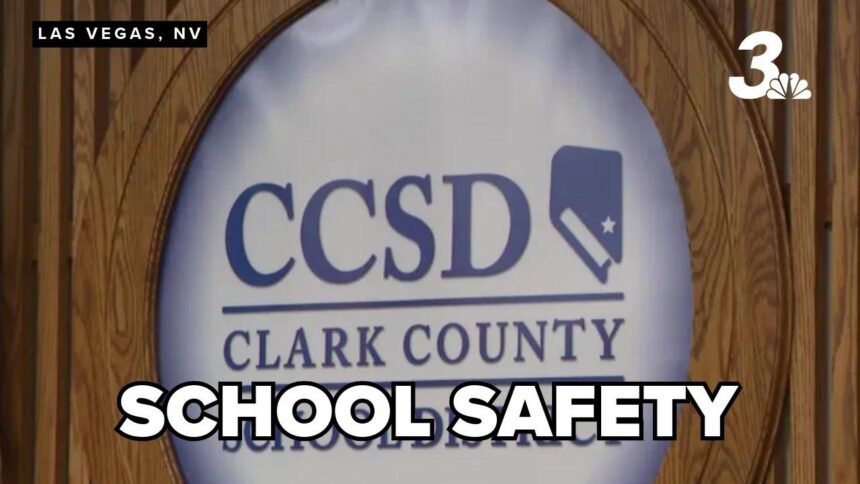Comprehensive Safety Strategies for Clark County Schools as Students Return
Implementing Robust Health Measures in Classrooms and Shared Spaces
As the new school year begins in Clark County, safeguarding student health within classrooms and communal areas is a critical focus. Schools have adopted stringent cleaning protocols, ensuring that frequently touched surfaces such as desks, door handles, and shared equipment are disinfected multiple times daily. Classroom layouts have been thoughtfully redesigned to maintain physical distancing, with desks positioned to reduce close interactions.
To reinforce hygiene practices, hand sanitizer dispensers are strategically placed in high-traffic zones, and scheduled handwashing breaks are integrated into daily routines.Additionally, clear visual cues like floor decals and signage guide student movement through hallways, cafeterias, and entry points, minimizing congestion and promoting orderly flow.
Mask mandates remain in effect for indoor common areas, complemented by enhanced ventilation systems that circulate fresh air to reduce airborne contaminants. The following table summarizes key health protocols implemented across various school environments to maintain a safe atmosphere:
| Location | Health and Safety Measures |
|---|---|
| Corridors |
|
| Dining Areas |
|
| Restroom Facilities |
|
Supporting Student Mental Wellness During the Transition Back to School
Recognizing the emotional challenges students face after prolonged disruptions, Clark County schools emphasize mental health as a cornerstone of a nurturing educational environment. Facilitating open dialogue encourages students to share their experiences and alleviates anxiety related to returning to in-person learning.
Schools are incorporating mindfulness exercises and stress management activities into daily schedules, creating designated quiet zones where students can decompress and practice self-care. Parents and educators are urged to remain attentive to behavioral changes such as social withdrawal, mood swings, or drops in academic performance, which may signal emotional distress.
To bolster resilience and reduce stress, consider these actionable strategies:
- Consistent emotional check-ins: Engage in brief, regular conversations to explore feelings and challenges.
- Structured daily routines: Balance academic work with physical activity and relaxation periods.
- Prioritize sleep hygiene: Encourage sufficient rest to support cognitive and emotional health.
- Encourage peer interaction: Promote group projects and social activities to strengthen connections.
Safe Travel Practices for Students Commuting to School
Ensuring student safety extends beyond the classroom to their journeys to and from school. Whether walking, cycling, or riding the bus, adherence to safety protocols is vital. Wearing bright or reflective clothing during early morning or late afternoon commutes enhances visibility, while strict observance of traffic signals and use of designated crosswalks reduce accident risks.
Bicycle riders should always wear helmets and utilize hand signals to communicate intentions at intersections, fostering safer road sharing. For those using school bus services, understanding routes and schedules, along with practicing safe boarding and disembarking procedures, is essential. Families are encouraged to review emergency response plans with their children to prepare for unexpected situations.
- Cross streets only at marked pedestrian crossings.
- Use helmets and reflective gear when cycling.
- Wait for buses in designated safe zones away from traffic.
- Follow all traffic laws and bus safety guidelines.
| Transportation Mode | Safety Recommendations | Suggested Equipment |
|---|---|---|
| Bicycle | Signal turns and obey traffic rules | Helmet, Reflective Vest |
| Walking | Use sidewalks and crosswalks exclusively | Bright Clothing, Reflective Accessories |
| School Bus | Remain seated until the bus fully stops | Backpack with Identification Tag |
Fostering Collaboration Between Families and Communities for Enhanced Student Safety
Active involvement from parents and local communities is instrumental in cultivating a secure school atmosphere.Engagement through safety workshops, participation in advisory boards, and involvement in emergency preparedness drills empowers families to better understand and support school safety measures.
Beyond school grounds, community initiatives such as neighborhood watch programs and partnerships with local law enforcement contribute to safer routes and environments for students.By working collectively, stakeholders can:
- Disseminate timely safety details via newsletters, social media, and community meetings.
- Promptly report suspicious behavior to appropriate authorities.
- Volunteer at school events that raise awareness and readiness.
- Create inclusive forums for open discussions about safety concerns.
Conclusion: Prioritizing Safety for a Successful Academic Year
As Clark County schools embark on a new academic term, maintaining a secure and healthy environment is paramount. Through adherence to comprehensive health protocols, attention to mental well-being, safe commuting practices, and strong community partnerships, students, families, and educators can collectively ensure a positive and protected learning experience. Continuous communication and cooperation will be essential in navigating ongoing challenges and achieving educational success without compromising safety.








